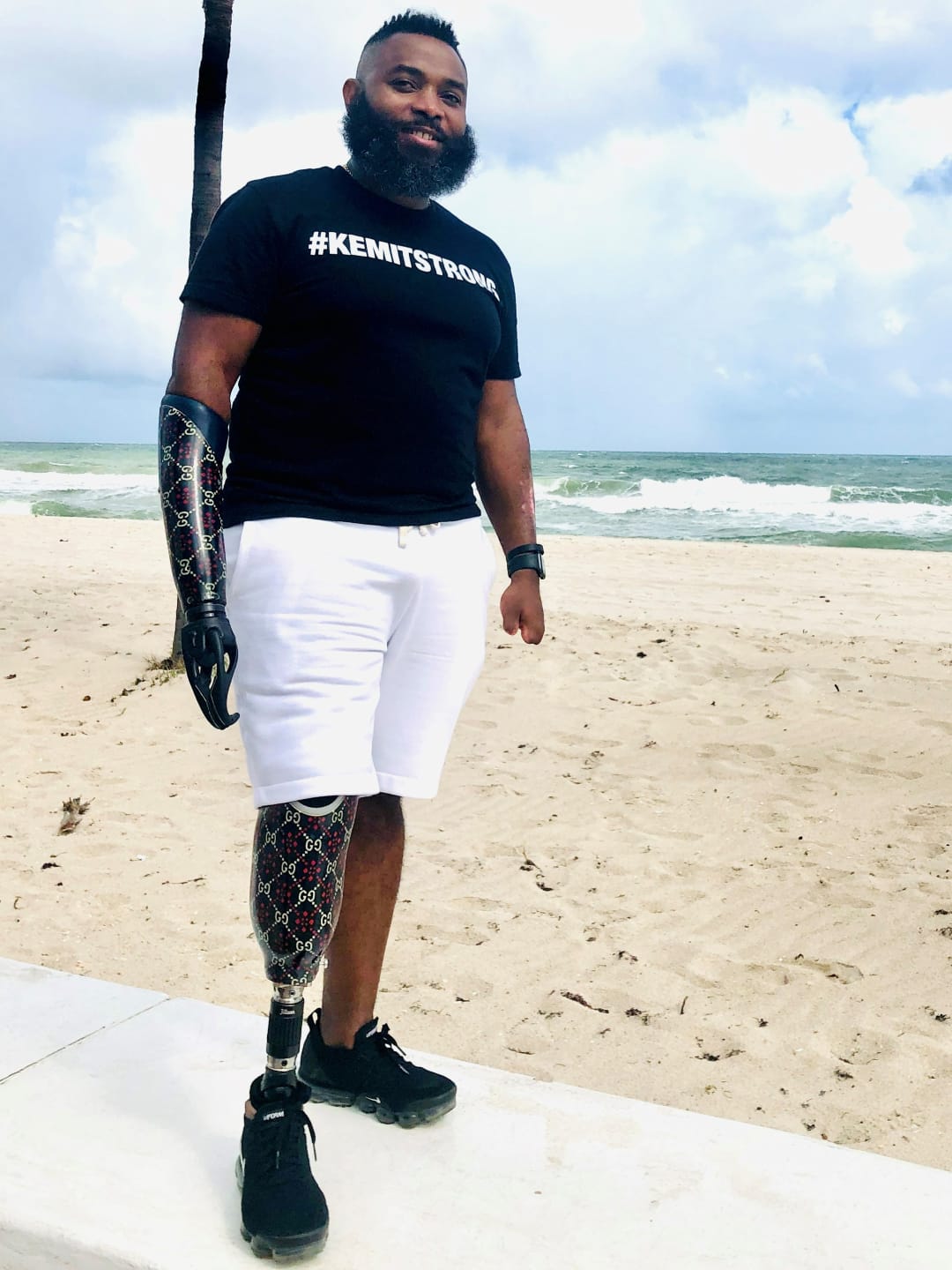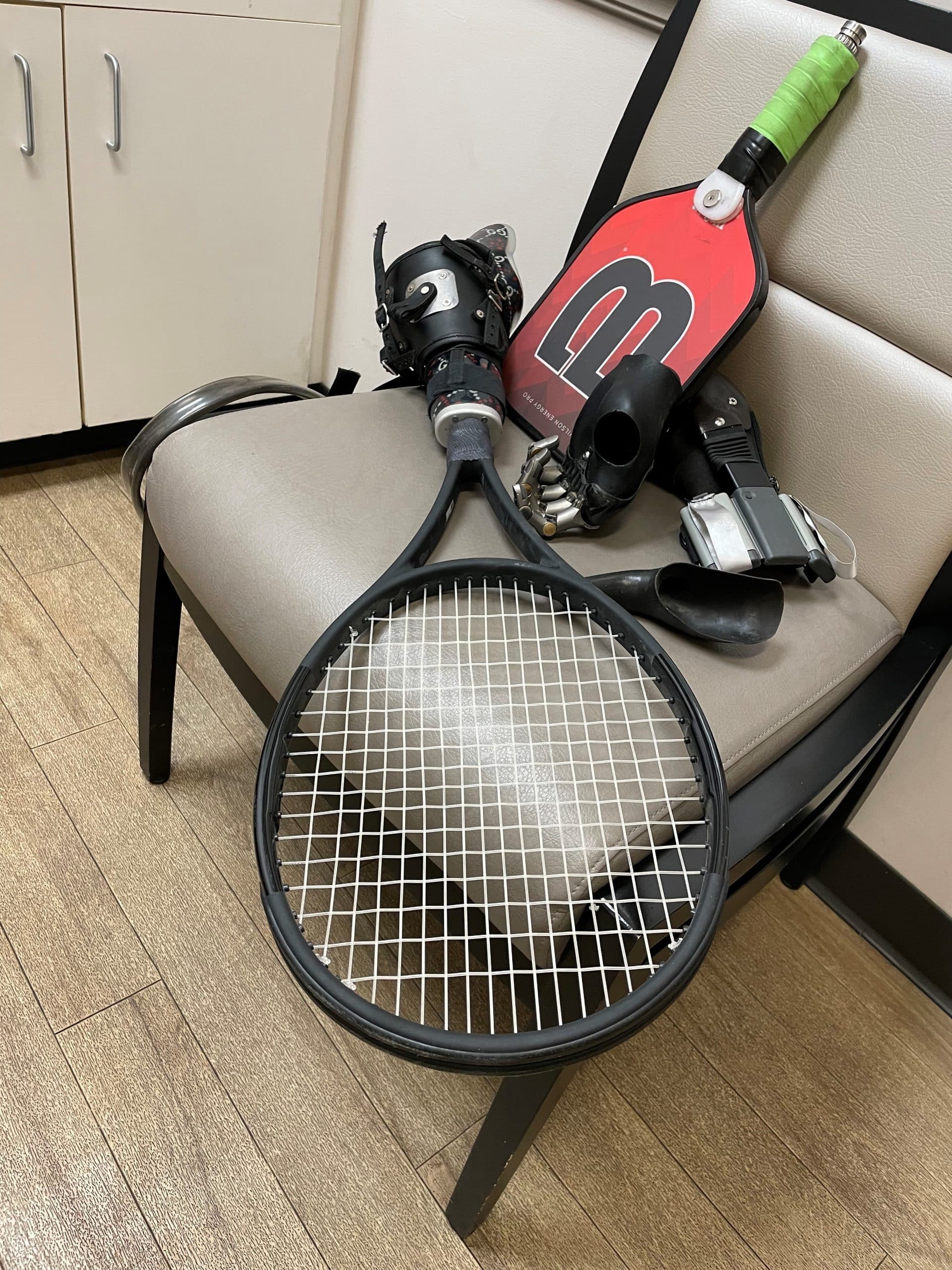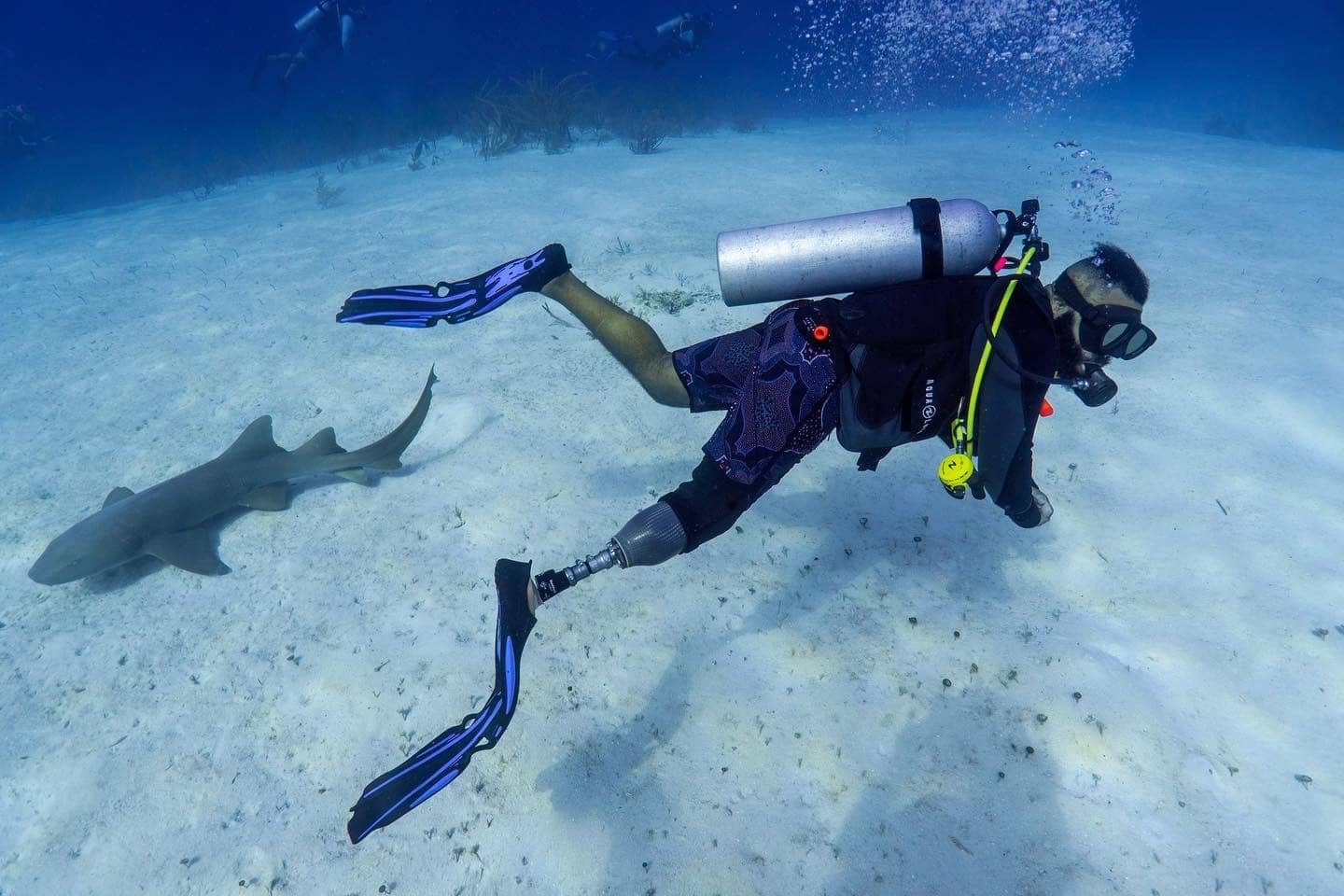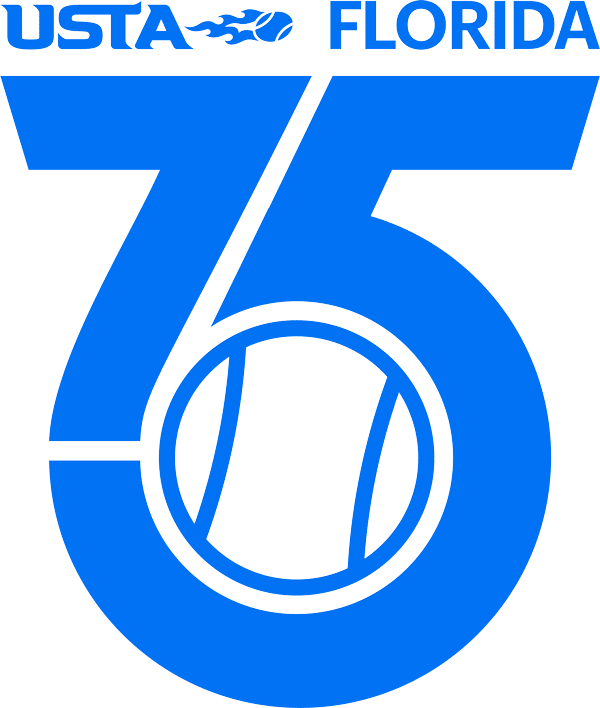They say that life comes at you fast and for Kemit-Amon Lewis everything was flipped on its head within seconds. The Marine Scientist, tennis player, and dancer went from living a normal life to becoming a quad amputee in the blink of an eye. But that hasn’t stopped him from living life to the fullest.
Nothing was out of the ordinary for him back in 2019. Lewis was diving in the oceans of his home island, Saint Croix, playing tennis, teaching dance classes, and spending time with his family. However, July 26, 2019, would alter his life forever.
Reliving the event that changed everything

Kemit-Amon Lewis continues to be a positive impact in the community.
On that day, Lewis woke up feeling a bit sick so he decided to go get looked at, but he couldn’t even imagine what would come for the next couple of hours. “I went to Acute Medical Care and then it just went downhill from there,” Lewis recalled. “I got there, and they were like, ‘your vitals are so horrible we’re not going to let you drive to the ER…We’re going to take you to the ER.’”
The next thing he remembered was waking up in Florida. He had been airlifted over to the Sunshine State, where his vitals continued to get worse as he was diagnosed with a rare bacterial infection. It was eating away at his body and caused him to slip into a coma for two weeks.
Luckily for him, he had his family by his side, who made sure that he would be given the best care and ability to make decisions for himself. Due to his condition, doctors wanted to amputate all his limbs, altering his life forever, and Lewis knew it was the right choice.
“It was an easy and straightforward decision to make,” Lewis said. “I’m fortunate that I was able to wake up and make the decision on my own.” One of the key aspects to his decision was knowing that he would have some sense of normalcy back in his life.
“One of the first things she [the doctor] mentioned when I woke up from the coma was that I was going to be back on the dance floor, diving again and back on the tennis court,” Lewis said.
Tennis had been a huge part of his life and getting that assurance he could still play gave him motivation to keep fighting.
How tennis shaped Kemit-Amon Lewis
Growing up, Kemit-Amon Lewis was extremely active in tennis, and post-surgery, he was determined to get back to where he was.
Lewis first started playing the sport in middle school, where he took lessons just to learn the basics of the game. As time went on, he would learn different aspects of the game from multiple people on the island.
He went on to play on his high school team in Saint Croix and after graduating, he joined the Men’s Division I team at Savannah State University. After finishing college, he played in tournaments and other events because he loved the competition that came with it.
After his injury, even though he was told he would be able to play the game he knew and loved, he was unsure if he would be able to get back to the level he was at.
Kemit’s fight back toward the tennis court

Kemit had to get his tennis gear altered to work with his prosthetics.
You may be wondering how on Earth it’s possible to play tennis with amputated limbs. The answer, a lot of positivity and perseverance. Lewis knew he was in for a long ride as playing with prosthetics is a whole new challenge.
“It [became] a waiting game to get all this stuff healed and stitches out and get to the point where you can bear weight on my foot, and bear weight on the limb for the prosthetic leg,” Lewis recalled.
Once everything was healed from his amputations, Kemit hit the ground running. To start off his journey back to tennis, Lewis picked up pickleball, which is played in a smaller area, but uses similar mechanics to tennis. “I picked up Pickleball as a way to get comfortable moving on a leg on a tennis court setting and start using the arm they fabricated for me.”
He got his first leg in January 2020 and quickly became used to being on it. Lewis started with walking, then when he was comfortable with that, he was given a new prosthetic, which was designed for running.
This new leg helped him even more because it had a better blade on it. “I can put my tennis shoe on it, and I can use that for quick bursts,” Lewis said.
Another challenge he faced was getting used to his new arm. Since his right hand was amputated at the wrist, gripping a racquet was another obstacle he needed to conquer.
The arm came equipped with the paddle strapped to it, but it took many trials to figure out the right length to keep it at. “The paddle worked and it broke, and it was fixed, and it worked again. Then it broke and it was fixed it. So, we went through that for a bit.”
When he was comfortable with hitting in pickleball he swapped over to a different arm, which held his tennis racket. And this too led to a series of adjustments. Lewis has a sweet spot on his tennis racket, and he wanted to make sure that his prosthetic was set up to let him use that spot.
After finally getting it to where he needed it, Kemit felt like he never left the sport. “The first rally was like 30 shots and then we hit another rally, where [my hitting partner] was like, ‘Oh my gosh, that’s like a good 40 shot rally.’” But after reviewing his camera footage, Lewis was blown away with what happened. “I went back home, and I looked at it and I was like, actually, it was a 76-shot rally.”
While this was a great step for Kemit, he is still determined to do even more. He is currently working with the prosthetic company to build a new arm that is more secure. This will prevent it from turning after hitting the ball around and he won’t need the harness to keep it on.
This new prosthetic will also allow him to bring back his serve game to tennis. Currently, the arm collects too much sweat that will just run down him if he attempts to serve. So, the plan is for this new one to prevent the sweat from sitting there and causing the racket to slip.
It’s still a long road ahead, but Kemit is set on returning to competitive tennis as soon as possible.
Being a role model to the world
For many people, it’s a lot easier to give up after going through a catastrophic event, but keeping a positive mindset and loving yourself have been essential to Kemit’s recovery.
“The biggest thing for me is that you have to love who you are,” he said, “That definition becomes something completely different when you have to get through whatever it is, but you have to love yourself enough to advocate for yourself.”
Kemit said he’s talked with many amputees in South Florida, and you can sense that there sometimes isn’t any motivation left in them. However, he said there are groups willing to help you achieve your goals and return to your normal life. But you must connect with yourself and find that passion again.

Kemit has prosthetics that are designed for diving.
He said it was a long journey just to get approved for his prosthetics because insurance companies didn’t find it as a medical necessity. “It’s a long story to actually get the stuff that I needed. But going back to advocacy, that’s me advocating for myself that hard.”
It would’ve been easy for Lewis to shelter himself and give up when he was told the prosthetics weren’t necessary. But, that was never going to happen as long as he had control over it.
Today, Kemit-Amon Lewis lives a normal life nearly identical to how he lived prior to July 26, 2019, the only difference being that he’s a quad amputee. He still dives into the depths of the ocean, dances like no one is watching, and plays the sport that he’s loved ever since he was a young boy.
When asked what he wants others to think about when they hear ‘Kemit-Amon Lewis’ his answer was simple, but powerful, “love.” The love that he has for his career and other passions has been his biggest motivator towards diving, dancing, and playing tennis again. He wants to push others to love what they do (work and fun) so much so, that they never settle for mediocracy.
It’s possible to live your life with disabilities and Lewis is determined to spread his message to the world. “Take the effort to learn about people with different abilities and it doesn’t have to just be folks with amputations,” he said. “Get to learn them, for the human beings that they are – this amputee, for example, also happens to be a marine scientist, dancer, tennis player and just a cool person.”


